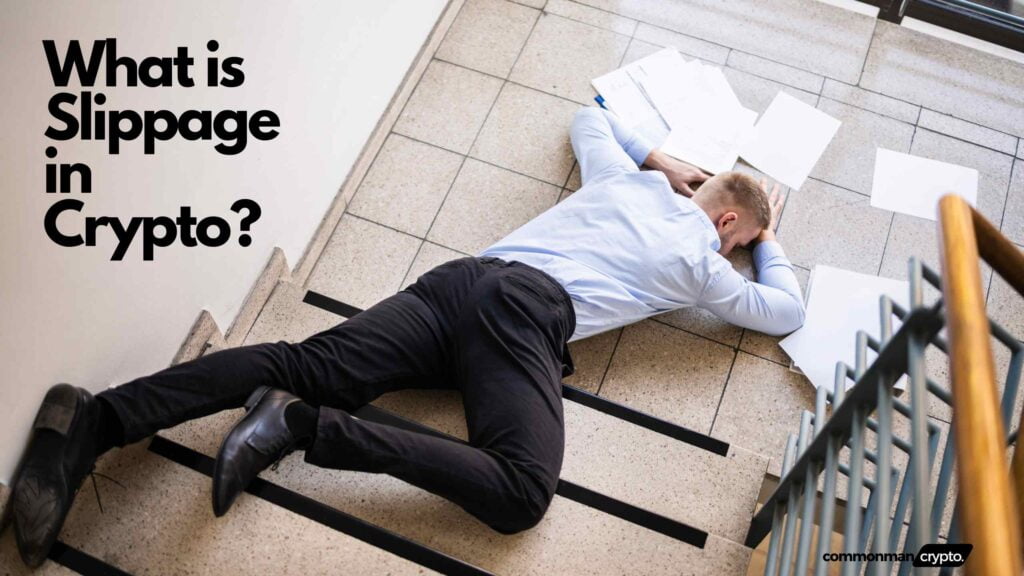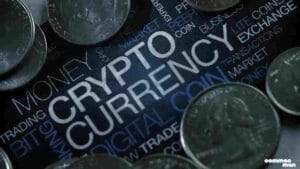Have you ever placed an order in the cryptocurrency market and discovered that the amount you paid was different from the one you had hoped for? You’re in the slippage world, where it’s a regular occurrence in volatile and sometimes unpredictable crypto markets. It’s a little similar to grabbing an apple at the market stall and then finding it’s switched for a slightly different apple by the time you get it.
What is the significance of this to you as a crypto trader or trader? The fact is that slippage can dramatically impact the payoff and profitability of the outcome of trades. It is particularly relevant in the crypto market, where the market is famous for its volatility and often low liquidity.
KEY TAKEAWAYS:
| Aspect | Details |
|---|---|
| Definition and Impact | – Slippage is the difference between the expected and executed trade prices. – It affects trade profitability, especially in volatile markets. |
| Types of Slippage | – Price Slippage: Caused by market volatility changing prices between order placement and execution. – Liquidity Slippage: Due to insufficient buyers/sellers at the desired price. |
| Factors Influencing Slippage | – Market Volatility: High volatility increases slippage. – Order Size: Larger orders face more slippage due to low liquidity. – Market Liquidity: Lower liquidity means higher slippage. – Network Congestion: High transaction volume delays order execution, causing slippage. |
| Calculating Slippage | Slippage Formula=((Executed Price-Expected Price)/Expected Price)x100 |
| Strategies to Minimize Slippage | – Limit Orders: Set specific price points for trades. – Stop Losses: Restrict price movements before execution. – Trading Bots: Automate trades for faster execution. – Market Analysis: Monitor conditions to adjust orders. – Trade During High Liquidity Periods: Reduce slippage by trading when markets are active. – Choose Reliable Exchanges: Use platforms with high liquidity. – Adjust Slippage Tolerance: Set maximum acceptable price differences. – Break Large Orders: Split trades into smaller orders. – Consider Layer 2 Solutions: Use faster, cheaper transaction platforms for decentralized exchanges. |
| Slippage Variations | – Cryptocurrency Differences: Popular cryptocurrencies have lower slippage than smaller altcoins. – Exchange Platforms: Slippage varies between centralized exchanges (order books, limit orders) and decentralized exchanges (liquidity pools, customizable slippage tolerance). |
This table provides a structured overview of the key points regarding slippage in crypto trading, including its types, factors influencing it, calculation, and strategies to minimize it.
In this article, we’ll try to explore the mysteries of the slippage that occurs in cryptocurrency transactions. We’ll examine the reasons behind it, how it could impact your trading, and what it can mean for your trading strategy. In the end, you’ll be able to understand the significance of slippage as an element to be aware of when it comes to trading with crypto and how you can manage it.
What is slippage?
In the context of buying cryptocurrency, it is a frequently inevitable aspect of trading and could have a major impact on the results of transactions. It is a reference to the gap between the price at which a trader would like a transaction to be concluded and the actual cost at which the trade will be completed. This is a crucial concept to comprehend for anyone trading and buying cryptocurrencies.
The term “slippage” refers to a difference between the expected price of a cryptocurrency and the price at which an order is fulfilled. For instance, in the case where a trader makes an order to purchase Bitcoin at $30,000; however, when the order is fulfilled, the price has risen to $30,050. This trader will experience a loss of $50.
Find out the steps required to purchase crypto on Kriptomat by following our comprehensive instructions ” How to buy cryptocurrencies on Kriptomat?.
Types of slippage
Slippage comes in a variety of forms, each having distinct effects and causes. In the main, there are two kinds of slippage encountered by traders:
Price Slippage occurs when the value of a cryptocurrency differs from the anticipated price at the time that the order was made. This kind of deviance is related to the market’s volatility. Imagine that you’re trying to purchase the price of a coin at $100, but within a split second between the moment you make your purchase and the time it takes to execute, the price rises to $102. This sudden increase payoff in a $2 slippage.
The term “liquidity slippage” refers to the situation where an order is completed at a different cost due to the absence of enough buyers or sellers at the price they want. If, for instance, you’re selling large quantities of a lesser-known cryptocurrency, it could be that buyers aren’t satisfied enough to purchase your product at the desired price. In the end, some of your orders could be filled at lower costs, and this could result in the possibility of slipping. It’s similar to selling a unique item in a small market. You might not be able to find buyers willing to pay the price you’re asking for immediately.
Knowing these two types of slippage will help traders anticipate the possible impact on their trading. They definitely require strategies to reduce and control, which are essential for trading in crypto.

Key factors that affect slippage
The slippage that occurs in cryptocurrency trading isn’t a random thing and is influenced by many important aspects:
Volatility in the market
In times of extreme volatility, the value of a cryptocurrency may fluctuate drastically in the interval between when an order is made and the time it is completed. Think of it as attempting to leap onto the train that is moving; the speed of the train makes it difficult to get exactly where you want to land.
Size of the order
Large orders might not be fulfilled at one price, particularly in the event that the market does not have sufficient quantity to sustain the trading. This could lead to a portion that is filled with more expensive prices. It’s similar to having to pour a massive container of liquid into a smaller funnel. Not everything can be poured through at the same time.
Market liquidity
In Markets with poor liquidity, it is possible to find fewer traders and buyers. This means that big orders could have a significant impact on the market price, resulting in greater shifts. Imagine selling a specific product in a small town. Getting buyers to buy your item may require you to reduce the price to higher than in a larger city.
Network congestion
Network congestion can also contribute to slippage in crypto. To understand this principle, consider the situation at a busy road border between countries: when multiple cars try to cross at once, staff at the border are only able to let each car through as quickly as humanly possible – however, this could delay your crossing. Similar to cryptocurrency transactions, blockchains can only handle so many transactions at once and in a queue format. Therefore, if multiple people transact simultaneously with you, your transaction could take time to go through, and by the time it does process, its price could change significantly–another slippage cause.
Each of these variables plays a significant role in the amount and frequency of the slippage that occurs in crypto trades. By analyzing and taking account of the market’s volatility, order size, and liquidity issues, investors are able to come up with more effective strategies to reduce the risk of slippage and improve their trading results.
How to calculate slippage?
Calculating the slippage of cryptocurrency trades is an easy procedure. Let’s look at how to determine slippage and then illustrate it with practical examples.
Slippage is defined as an amount that is the sum of the predicted price of a transaction and the price at which it is actually executed, usually expressed in terms of per cent. The formula to calculate slippage is:
Slippage=((Executed Price-Expected Price)/Expected Price)x100
Buy example
Let’s suppose you’re buying Bitcoin, and the estimated price for placing a request is $40,000. At the time that the purchase is completed, the real cost is $40,200.
Calculation: Slippage=((40,200 – 40,000)/40,000)x100 = 0.5
This is an error of 0.5%.
Sell Example
Now, imagine that you’re selling Ethereum and expecting to make it happen at a price of $2,500. But the actual cost is $2,480.
Calculation: Slippage=((2,480-2,500)/2,500)x100 = -0.8%
This time, the negative number suggests a shift in your favour, and the price shows a 0.8 percentage decrease from the price you expected.
Knowing and calculating the slippage is essential for successful trading on the cryptocurrency market.
How do you minimize slippage?
There are a variety of techniques and tricks traders can utilize to lessen the effect of loss on your cryptocurrency trades.
- Limit Orders: Placing limit orders is an extremely effective way of avoiding slippage in the stock market. Simply put, setting limit orders allows you to specify an acceptable purchase or selling price, and this type of buy or sell order will only be executed at that particular price point, eliminating any unpleasant slippage surprises and providing the results that you seek.
- Stop Losses: A stop loss order can also help mitigate potential slippage by restricting price movement before an order executes, meaning if it fluctuates too significantly, it won’t allow you to execute trades if prices fluctuate too rapidly and thus prevent significant slippage-induced losses.
- Trading Bots: Automated trading systems (also known as trading Bots) can also help reduce slippage by using advanced algorithms to monitor markets and execute trades much quicker than a human can when favorable conditions present themselves. This technique eliminates potential price fluctuation caused by human hesitation; rather, the trading Bot executes its orders quickly and efficiently using the initial instructions provided.
- Analysis of Crypto Market: One way to limit losses due to slippage is by closely monitoring market conditions. By staying abreast of news and events that might impact prices, you can adjust your orders accordingly so as to prevent unexpected price changes and minimize potential losses. Of course, this method should never be considered foolproof, as unexpected congestion could ruin all your trades.
- Trade during High Liquidity Periods: Slippage is less likely when markets feature both high liquidity and low volatility.
- Choose Reliable Exchanges: Look for exchanges that boast high liquidity and have low slippage rates.
- Adjust Slippage Tolerance: Some platforms enable you to set an acceptable maximum price difference threshold for trades.
- Break Large Orders: For large trades, consider breaking them up into multiple orders to minimize market impact and the possibility of slippage.
- Consider Layer 2 Solutions: For decentralized exchanges, trading on Layer 2 platforms may offer faster and cheaper transactions, potentially reducing slippage.
Slippage Across Different Blockchain Networks and Platforms
As is well-known, there are multiple causes and solutions for crypto slippage. But did you know it varies significantly across cryptocurrencies and exchanges?
Each cryptocurrency varies in its liquidity and volatility levels, which have an impactful ripple-through to slippage during trades. Popular cryptocurrencies such as Bitcoin are more secure, thus tending to possess greater liquidity with reduced volatility – leading to less slippage during transactions compared with smaller altcoins that often exhibit both lower liquidity and greater volatility, resulting in greater slippage during transactions.
Slippage doesn’t just vary across networks; it also differs depending on which platforms are using them. Therefore, it is crucial that you conduct due diligence on any exchange platform you plan on using, as slippage can vary significantly from platform to platform.
At centralized exchanges, the depth and activity of their order book determine the slippage experience for users. Furthermore, such platforms do not allow access to non-custodial wallets, forfeiting ownership of assets to a central entity. On the upside, though, they offer limit orders, unlike most decentralized exchanges, which allow you to set an acceptable slippage level.
Decentralized exchange platforms such as Uniswap and PancakeSwap operate without regulatory oversight, meaning trade execution relies entirely on liquidity in their system – meaning less likelihood of liquidity risks and slippage rates typically between 0.5%-1% are set as default, so traders can customize slippage tolerance based on individual preferences. Plus, decentralized platforms don’t pose as many centralization risks, giving users greater confidence when transacting over them.
No matter where you purchase cryptocurrency, you are likely to experience slippage, and there is no guaranteed approach that works best.
What is slippage in cryptocurrency trading?
Slippage refers to the difference between an anticipated price for a trade and its actual execution price, which often occurs as market conditions shift between when an order was initially placed and when it is filled.
What causes slippage in crypto markets?
Slippage in crypto markets is typically caused by high market volatility, low liquidity, large order sizes, and network congestion (particularly on decentralized exchanges).
Is slippage always negative?
No, slippage can either be positive or negative. Positive slippage occurs when an order is executed at a better price than expected, while negative slippage results in worse pricing than anticipated.
How can I calculate slippage?
The formula to calculate slippage percentage is:
Slippage (%) = ((Actual Execution Price – Expected Price) / Expected Price) * 100
What is considered normal slippage in crypto trading?
Slippage of between 0.05% and 0.10% is typically considered acceptable; in highly volatile markets, slippage may reach between 0.50-1%; anything greater than this threshold is generally viewed as excessive.
What is slippage tolerance?
Slippage tolerance is a setting used on decentralized exchanges to safeguard traders against sudden price changes. It enables traders to set an acceptable maximum price difference they’re willing to accept for each trade they complete, helping protect traders against sudden market movements.
Bottom line
We’ve explored the idea of slippage in cryptocurrency trading. It is important to understand the various types of slippage, know the reasons behind it, and understand ways to quantify it correctly. We also looked at various ways to minimize slippage, as a well-managed managing slippage could result in more precise trade executions as well as lower trading costs. We encourage you to browse our vast collection of educational resources to help you understand the cryptocurrency markets. When you sign up to open a Kriptomat account, you will have access to a Kriptomat account, and by registering with us, you get access to a range of trading tools that are cutting-edge and an incredibly secure and regulatory-compliant platform for all of your crypto trading activities.









